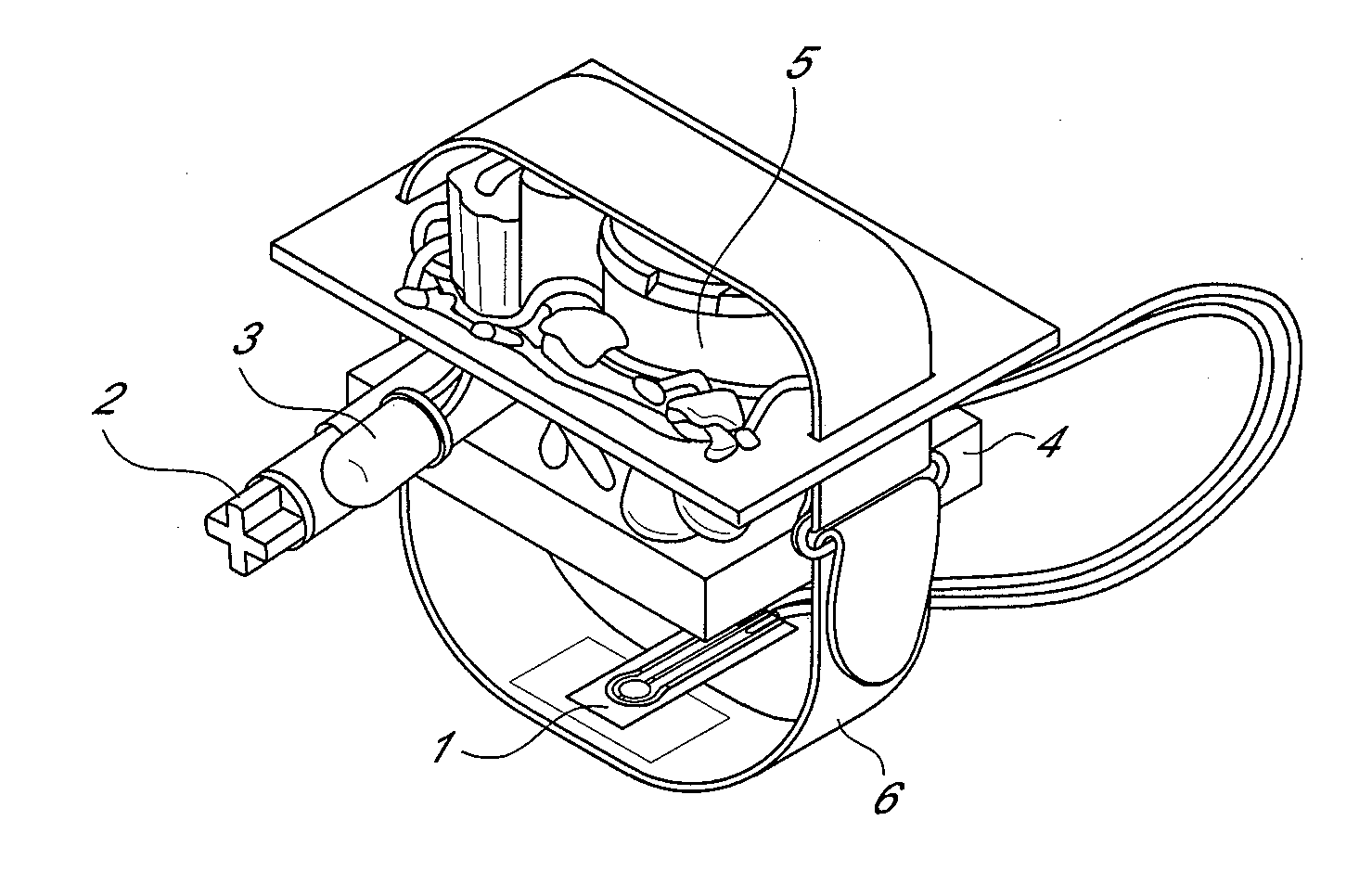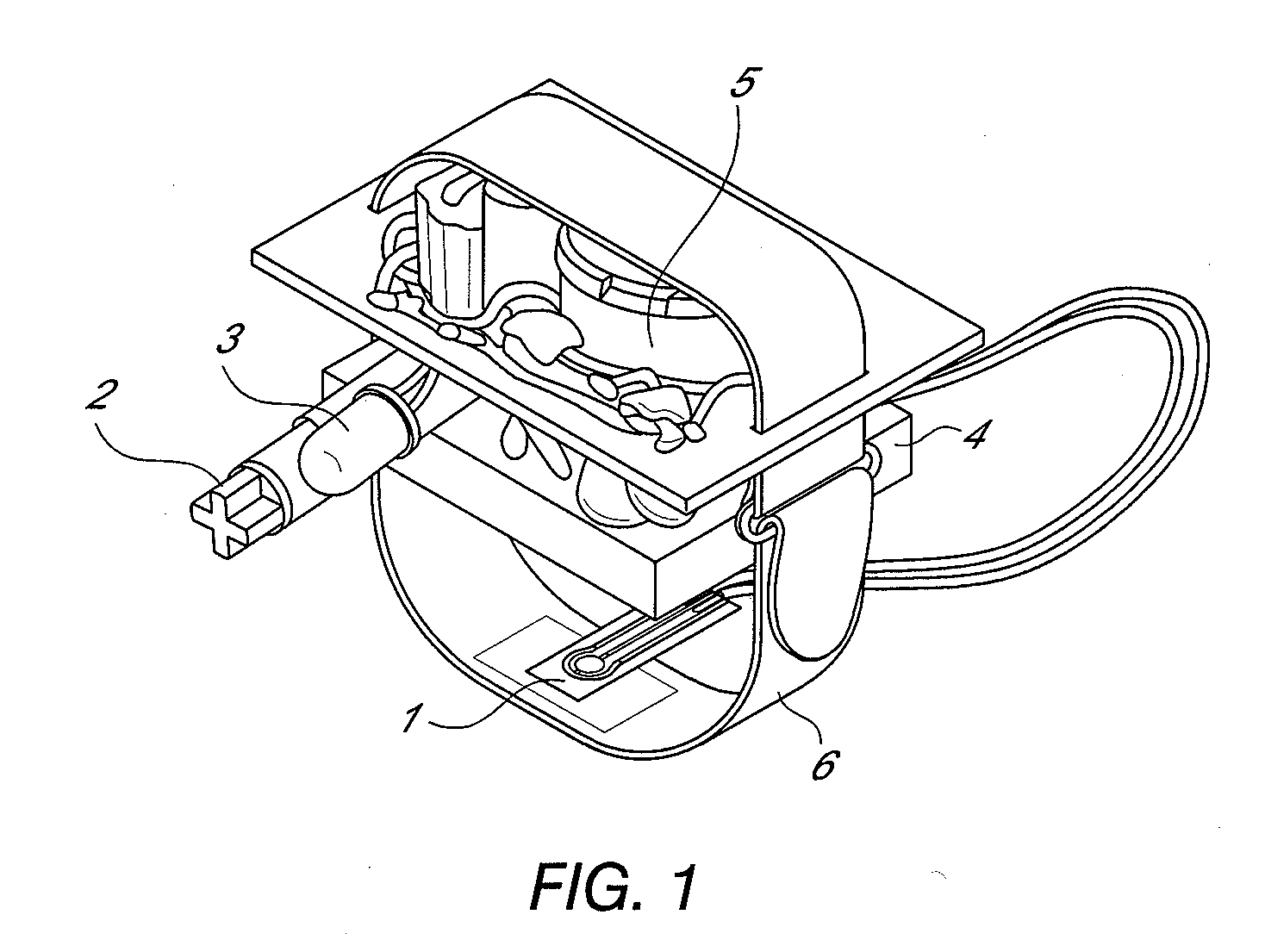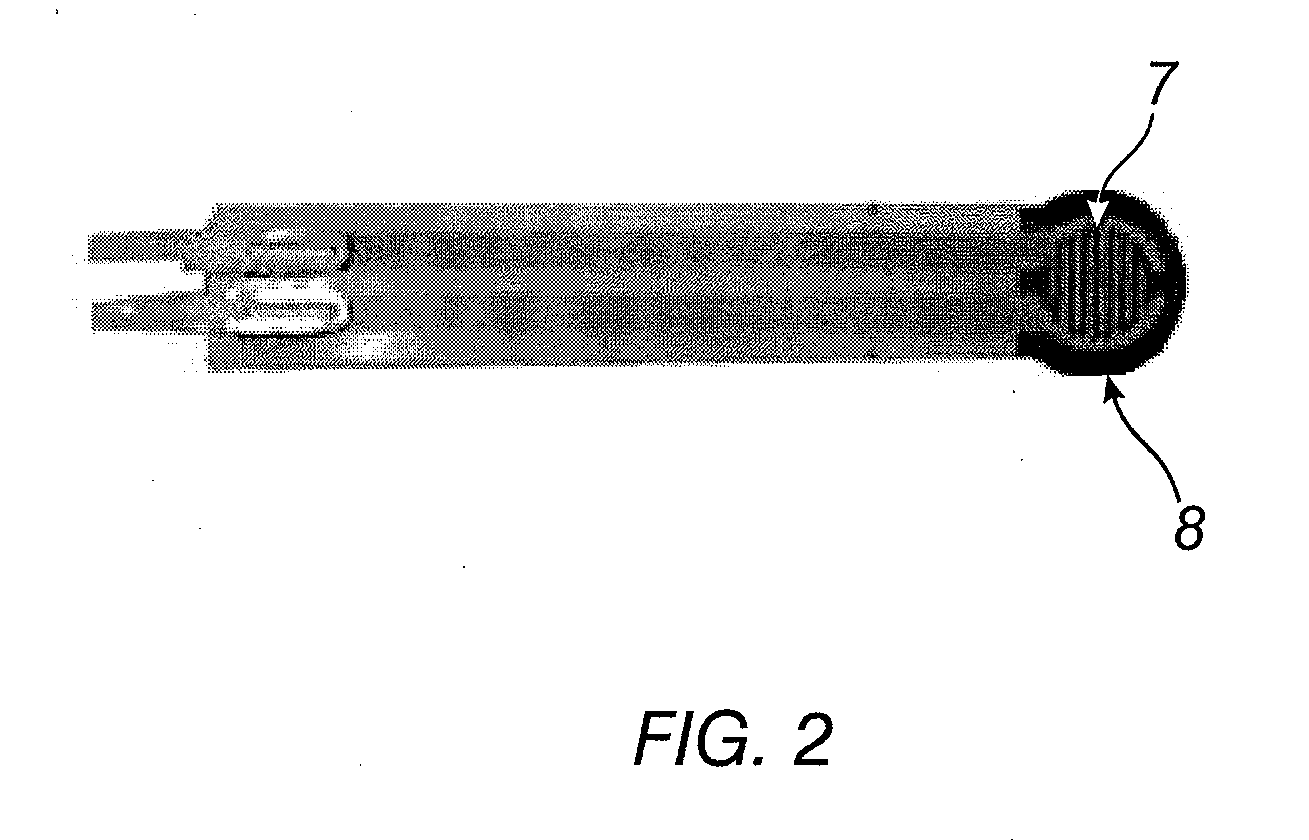Biofeedback interface device and methods for controlling heartrate in response to signals
a biofeedback and signal technology, applied in bioelectric signal measurement, medical science, diagnostics, etc., can solve the problems of affecting health, affecting the wide adoption of biofeedback as an effective method of self-regulate response to stressful stimuli, and a high resting heart rate may be a risk factor for cardiovascular disease, so as to prevent or reduce the frequency of episodes of anxiety, the effect of preventing or reducing the frequency of episodes
- Summary
- Abstract
- Description
- Claims
- Application Information
AI Technical Summary
Benefits of technology
Problems solved by technology
Method used
Image
Examples
example 1
[0063]A prototype biofeedback interface device was constructed of a Velcro wrist strap having a plastic loop on one end through which the opposite end of the Velcro strap passes to form an adjustable loop with a sensor was mounted to the wrist-facing surface of the strap, as shown in FIG. 1, numeral 6. The sensor was comprised of: a force sensing resistor, as shown in FIG. 1, numeral 1, two three volt batteries, a second order filtering stage with a cutoff frequency of 20 Hz, an amplitude modulator, a comparator between threshold and actual sensed heart rate off the wrist, and a pulse generator with a LED, as shown in FIG. 1, numeral 3, connected to the pulse generator, a Frequency-to-Voltage converter, a voltage divider circuit, which created a threshold, a NPN transistor serving as a driver in case threshold is surpassed and a buzzer, as shown in FIG. 1, numeral 5, that alarms the user when measured heart rate exceeds the threshold. FIG. 13 shows a schematic of the assembly. The c...
example 2
[0064]A subject (PM) having regular episodes of depression over 25 times in a two week period was provided with an embodiment of the invention as described in Example 1 and was instructed to wear the device during the day with the exception of sleeping, showering, doing strenuous exercise, or working (if the activity resulted in an increase in heart rate). The subject was given instructions on meditation techniques and was asked to replace negative thoughts with happier thoughts or memories of happy occasions or to meditate when alerted of an increase in heart rate over an established threshold. Medications were not used to control depression. Following the use of the device for two weeks, the subject reported that depression episodes were reduced to 9 episodes for the first week and 7 episodes for the second week. For the two week trial period, a total of 16 episodes of depression were reported, representing a reduction in depressive episodes of 36% compared to a two week period be...
example 3
[0065]A subject (CT) suffering from mild to moderate depression was provided with an embodiment of the invention as described in Example 1 and was instructed to wear the device during the day with the exception of sleeping, showering, doing strenuous exercise, or working (if the activity resulted in an increase in heart rate). The subject was given instructions on meditation techniques and was asked to replace negative thoughts with happier thoughts or memories of happy occasions or to meditate when alerted of an increase in heart rate over an established threshold. Medications were not used to control depression. Prior to receiving the device, the subject reported 4 depressive episodes over a 2 week period. During the 2 week trial period, the subject reported a total of 1 episode of depression, representing a reduction in depressive episodes of 75% compared to a two week period before receiving the device. Results are summarized in Table 1.
PUM
 Login to View More
Login to View More Abstract
Description
Claims
Application Information
 Login to View More
Login to View More - R&D
- Intellectual Property
- Life Sciences
- Materials
- Tech Scout
- Unparalleled Data Quality
- Higher Quality Content
- 60% Fewer Hallucinations
Browse by: Latest US Patents, China's latest patents, Technical Efficacy Thesaurus, Application Domain, Technology Topic, Popular Technical Reports.
© 2025 PatSnap. All rights reserved.Legal|Privacy policy|Modern Slavery Act Transparency Statement|Sitemap|About US| Contact US: help@patsnap.com



